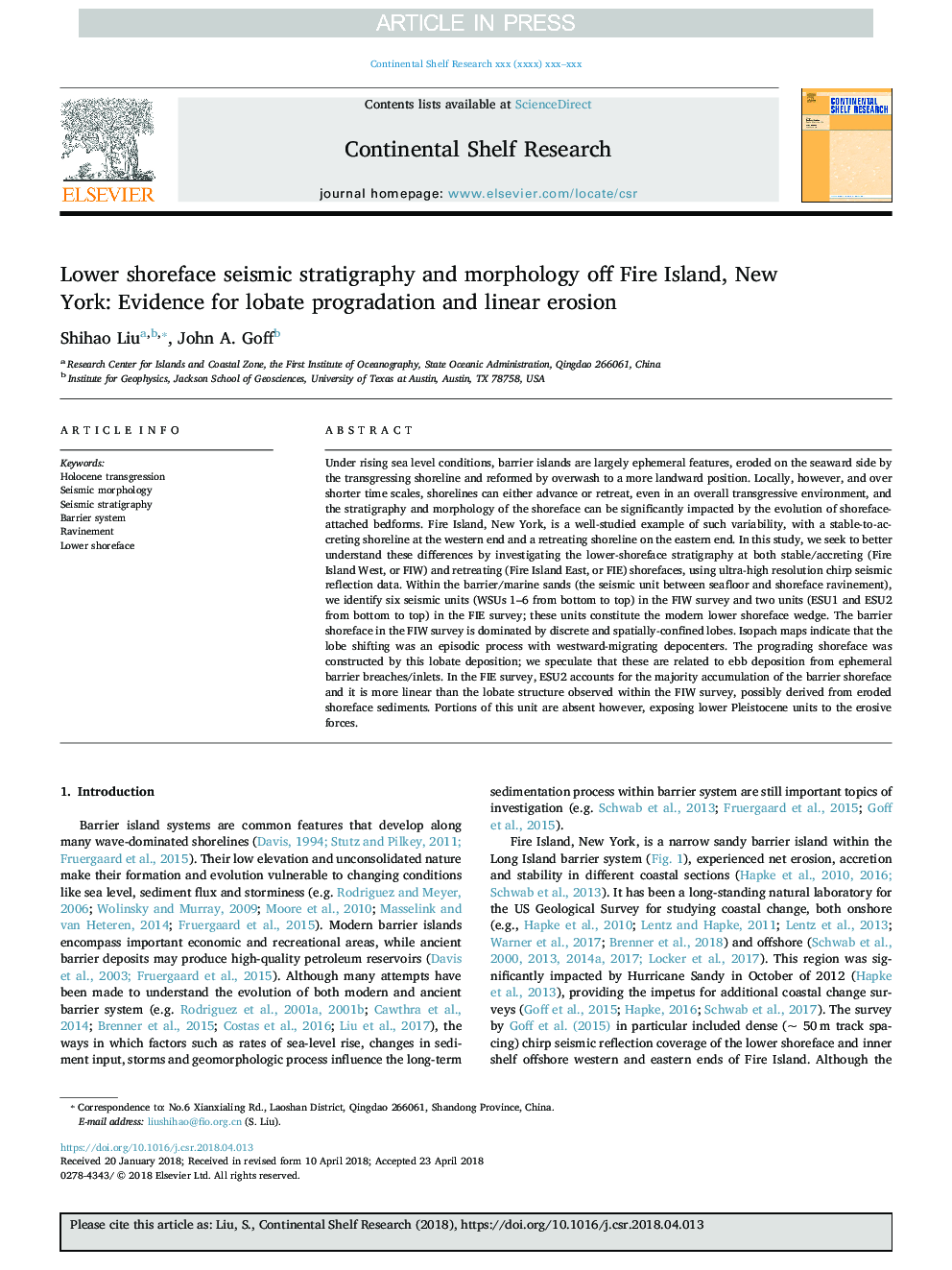| کد مقاله | کد نشریه | سال انتشار | مقاله انگلیسی | نسخه تمام متن |
|---|---|---|---|---|
| 8884028 | 1626050 | 2018 | 12 صفحه PDF | دانلود رایگان |
عنوان انگلیسی مقاله ISI
Lower shoreface seismic stratigraphy and morphology off Fire Island, New York: Evidence for lobate progradation and linear erosion
ترجمه فارسی عنوان
چینه شناسی و مورفولوژی زمین لرزه پایین تر از جزیره آتشفشان، نیویورک: شواهدی برای ترسیم لابات و فرسایش
دانلود مقاله + سفارش ترجمه
دانلود مقاله ISI انگلیسی
رایگان برای ایرانیان
کلمات کلیدی
تجاوز هولوکسی، مورفولوژی لرزه ای، چینه شناسی لرزه ای، سیستم مانع، معالجه، پایین ساحل،
موضوعات مرتبط
مهندسی و علوم پایه
علوم زمین و سیارات
زمین شناسی
چکیده انگلیسی
Under rising sea level conditions, barrier islands are largely ephemeral features, eroded on the seaward side by the transgressing shoreline and reformed by overwash to a more landward position. Locally, however, and over shorter time scales, shorelines can either advance or retreat, even in an overall transgressive environment, and the stratigraphy and morphology of the shoreface can be significantly impacted by the evolution of shoreface-attached bedforms. Fire Island, New York, is a well-studied example of such variability, with a stable-to-accreting shoreline at the western end and a retreating shoreline on the eastern end. In this study, we seek to better understand these differences by investigating the lower-shoreface stratigraphy at both stable/accreting (Fire Island West, or FIW) and retreating (Fire Island East, or FIE) shorefaces, using ultra-high resolution chirp seismic reflection data. Within the barrier/marine sands (the seismic unit between seafloor and shoreface ravinement), we identify six seismic units (WSUs 1-6 from bottom to top) in the FIW survey and two units (ESU1 and ESU2 from bottom to top) in the FIE survey; these units constitute the modern lower shoreface wedge. The barrier shoreface in the FIW survey is dominated by discrete and spatially-confined lobes. Isopach maps indicate that the lobe shifting was an episodic process with westward-migrating depocenters. The prograding shoreface was constructed by this lobate deposition; we speculate that these are related to ebb deposition from ephemeral barrier breaches/inlets. In the FIE survey, ESU2 accounts for the majority accumulation of the barrier shoreface and it is more linear than the lobate structure observed within the FIW survey, possibly derived from eroded shoreface sediments. Portions of this unit are absent however, exposing lower Pleistocene units to the erosive forces.
ناشر
Database: Elsevier - ScienceDirect (ساینس دایرکت)
Journal: Continental Shelf Research - Volume 163, 1 July 2018, Pages 23-34
Journal: Continental Shelf Research - Volume 163, 1 July 2018, Pages 23-34
نویسندگان
Shihao Liu, John A. Goff,
